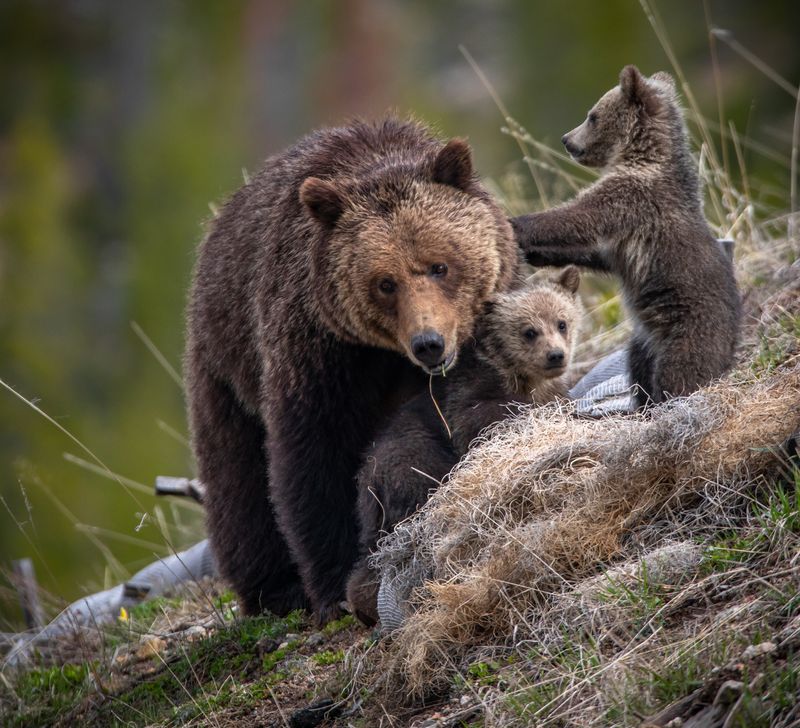Bears, Part 1: Bear Basics and Bear Encounters
In Part 1 of this 3-part series about bears in the backcountry, inspired by the book Grizzly Confidential by Kevin Grange, we explore bear territory, the different types of bears, and what to do in case you encounter a bear.

American Black Bear, Photo by Pete Nuji
Brown/Grizzly Bears (sow and cubs), Photo by Peter Mangolds
Grizzly Confidential
I recently read Grizzly Confidential * by Kevin Grange. Before I read this book I didn’t know much about bears or bear safety other than what I learned from a 15 minute training session in Denali National Park many years ago. Now I can’t get enough of bears. Grange spent two years with bears and bear experts to bring the reader a wide-ranging narrative of all-things-grizzly-bear. Grizzlies are remarkable animals for so many reasons: their behavior, their personality, and their resilience in the face of human population growth. (As an aside: Kevin also wrote Beneath Blossom Rain, which is one of my favorite vicarious adventure books, about his walk across Bhutan on the Snowman Trek. I didn’t realize this until well into my research for this blog post.)
In this three-part blog series, I would like to share with you some things I learned from Grizzly Confidential, especially as it pertains to adventuring in bear country. I had the great fortune to work directly with the author on this blog series, and his bear knowledge was a tremendous help.
Part 1 (this post): Bear Basics and Bear Encounters
Part 2: Preventative Backcountry Bear Safety
Part 3: Grizzly Bears are Amazing
Brown Bears and Black Bears
As the title implies, Grizzly Confidential is a book about grizzly bears, also known as brown bears.
If you are a North America-based hiker, you’re much more likely to be hiking in black bear territory than brown bear territory. Black bears are fairly common in large portions of North America, while various subspecies of brown bears are largely found in the very northern latitudes of the world, such as western Canada, Alaska, the very northwest of the continental United States, northern Russia, and Scandinavia. They’re also found farther south in Europe and Asia.
American Black Bear Territory (darker red: current; light red: historic)
By IUCN Red List of Threatened Species, species assessors and the authors of the spatial data., CC BY-SA 3.0, https://commons.wikimedia.org/w/index.php?curid=85122161
Brown Bear Territory
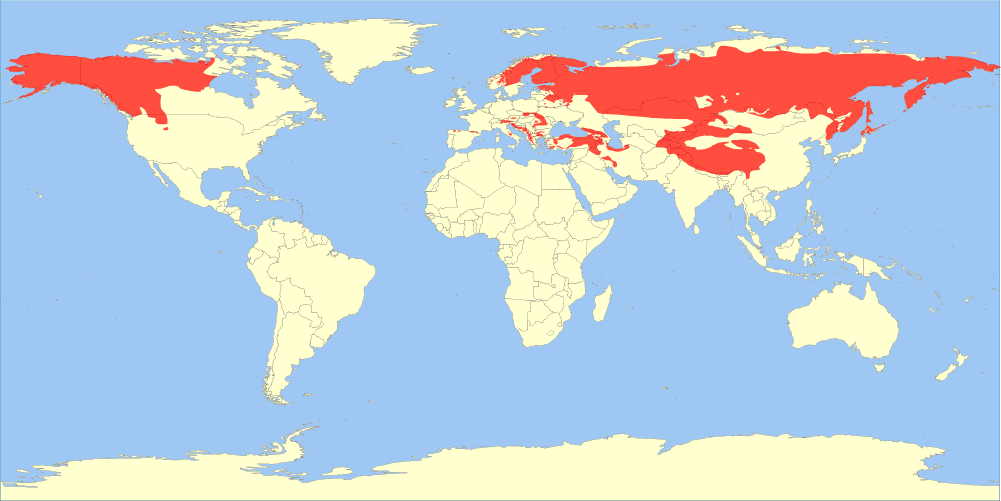
By IUCN Red List of Threatened Species, species assessors and the authors of the spatial data., CC BY-SA 3.0, https://commons.wikimedia.org/w/index.php?curid=12267075
What is the difference between a black bear and a brown bear?
Brown bears can have very dark fur, and black bears can have light-colored fur. So how do you tell the difference between a brown bear and a black bear? The easiest clue is by looking at the shoulders. A brown bear has a shoulder hump, while a black bear does not. Next you can tell by looking at the shape of the head. A brown bear has a distinct, protruding snout similar to a Labrador retriever or a beagle. A black bear, however, has a straight line from its nose to its forehead like a bull terrier (remember Spuds MacKenzie?) or a greyhound. And finally, brown bears have short rounded ears while black bears have comparably larger and pointier ears.
Characteristic Brown / Grizzly Bear Black Bear
Shoulder Has a shoulder hump Straight - no hump
Ears Short and round Large and slightly pointy
Face shape Dished face, like a beagle snout Straight line from nose to forehead, like a bull terrier snout
Brown/Grizzly Bear Identification

Graphic courtesy of Kevin Grange
More examples of brown / Grizzly bears

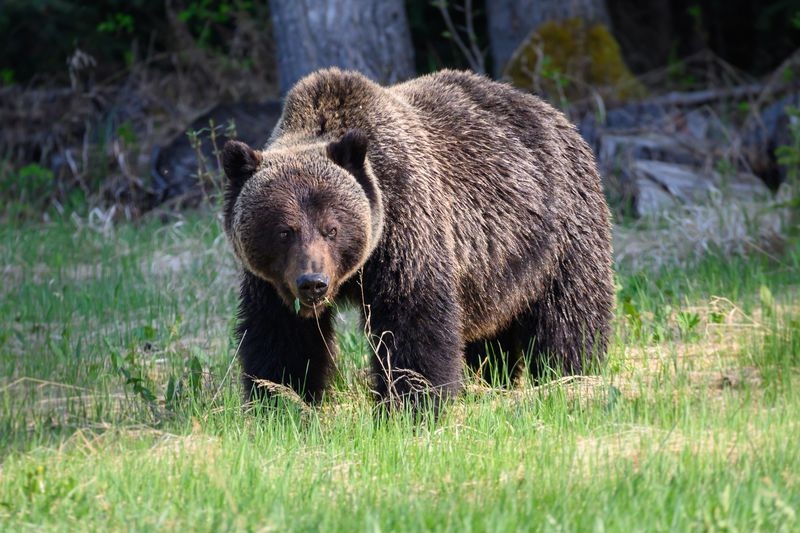
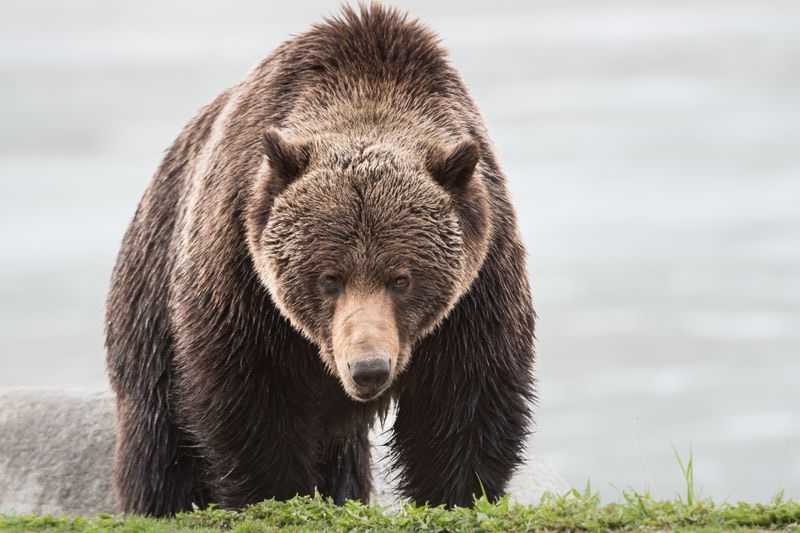
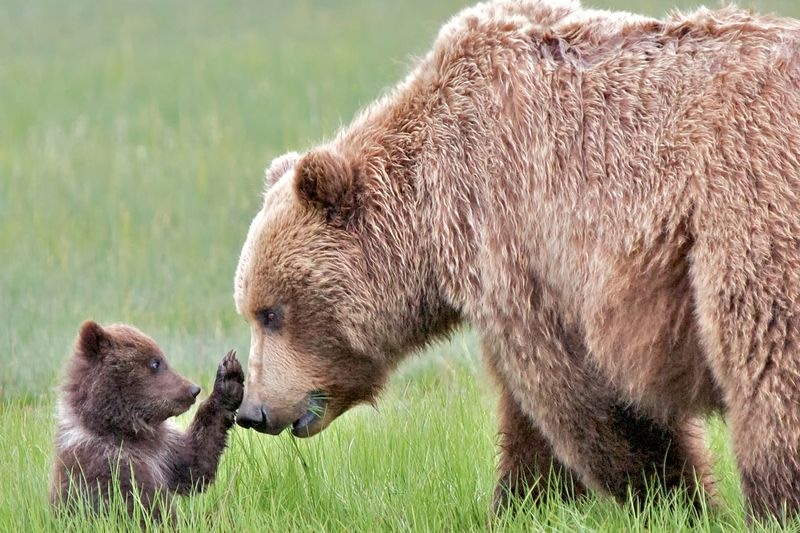
Black Bear Identification
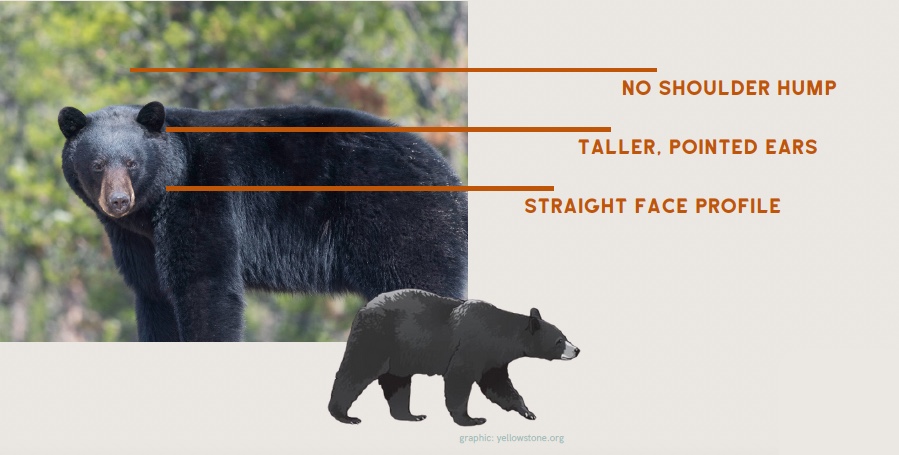
Graphic courtesy of Kevin Grange
More examples of black bears
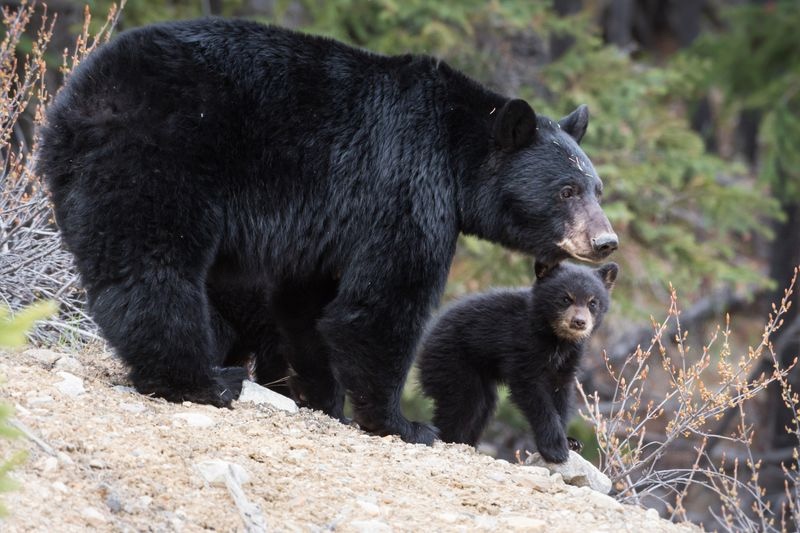
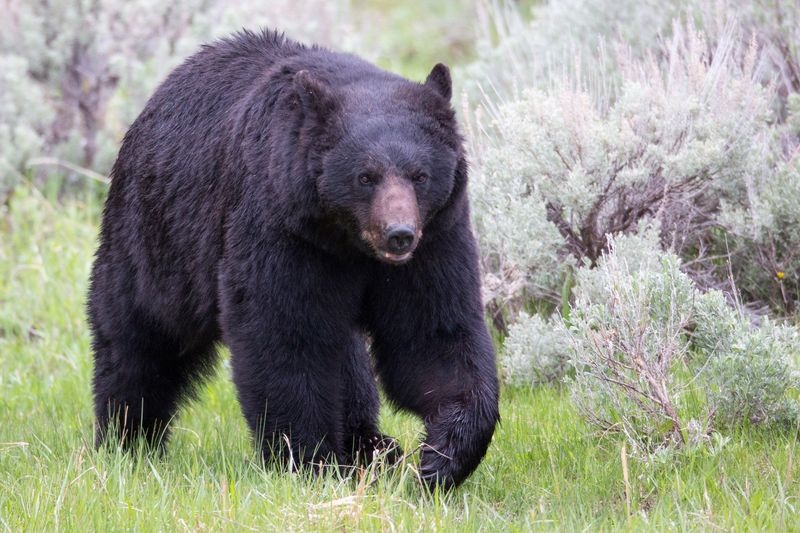

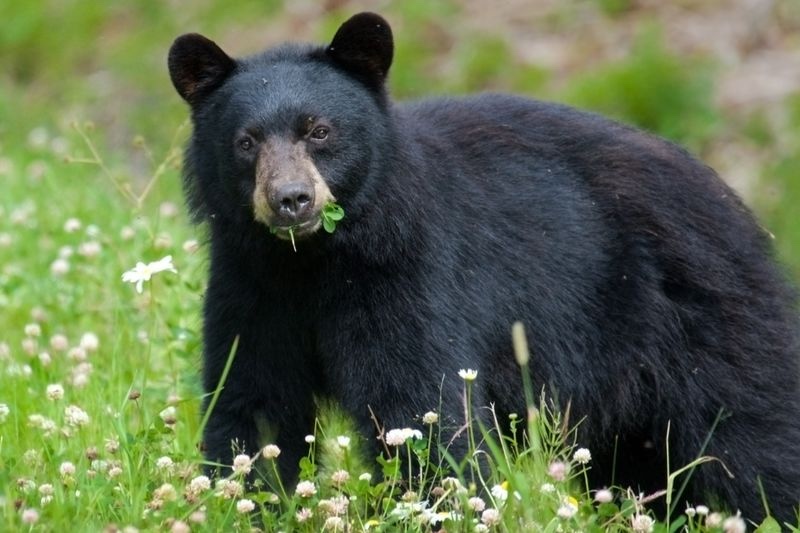
What to do if you encounter a bear
If you hike long enough in bear country, you will almost certainly encounter one. On my thru-hike of the Pacific Crest Trail I encountered three black bears: two in California (Yosemite National Park and Lassen National Park) and one in northern Washington (Pasaytan Wilderness). Each bear behaved slightly differently, but none of them had any interest me.
Although brown bears and black bears are different species with different behavior, you can use almost all of the same rules when encountering them.
Kevin Grange has kindly provided a video description below of what to do when you encounter a bear. The flow-chart below Kevin’s video also describes the decisionmaking process when encountering a bear in the wild.
Bear encounter flow chart
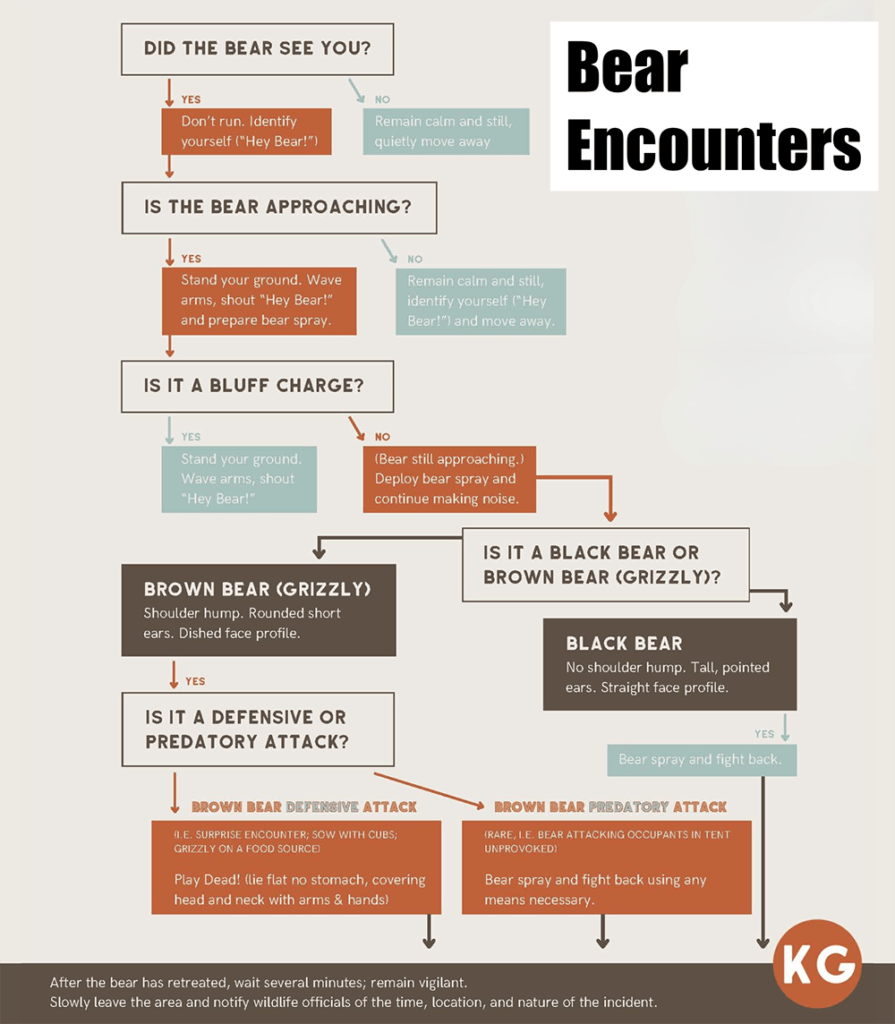
Flowchart courtesy of Kevin Grange
Conclusion
“Know before you go.” Before your backcountry adventure familiarize yourself with bear identification and the steps to take in the case you encounter a bear. Bear attacks are extremely rare, but if it happens to you, know what to do. Continue this series with part 2 to learn more about preventative bear safety.
*FarOut was provided with an advance copy of Grizzly Confidential, which was not available for purchase at the time. Since FarOut does not accept free goods that we write about, we made a contribution to the Greater Yellowstone Coalition in the amount of the cover price of Grizzly Confidential. FarOut receives no commission for the sale of Grizzly Confidential (or for Beneath Blossom Rain). We just really liked this book and want to help spread the word about it.
